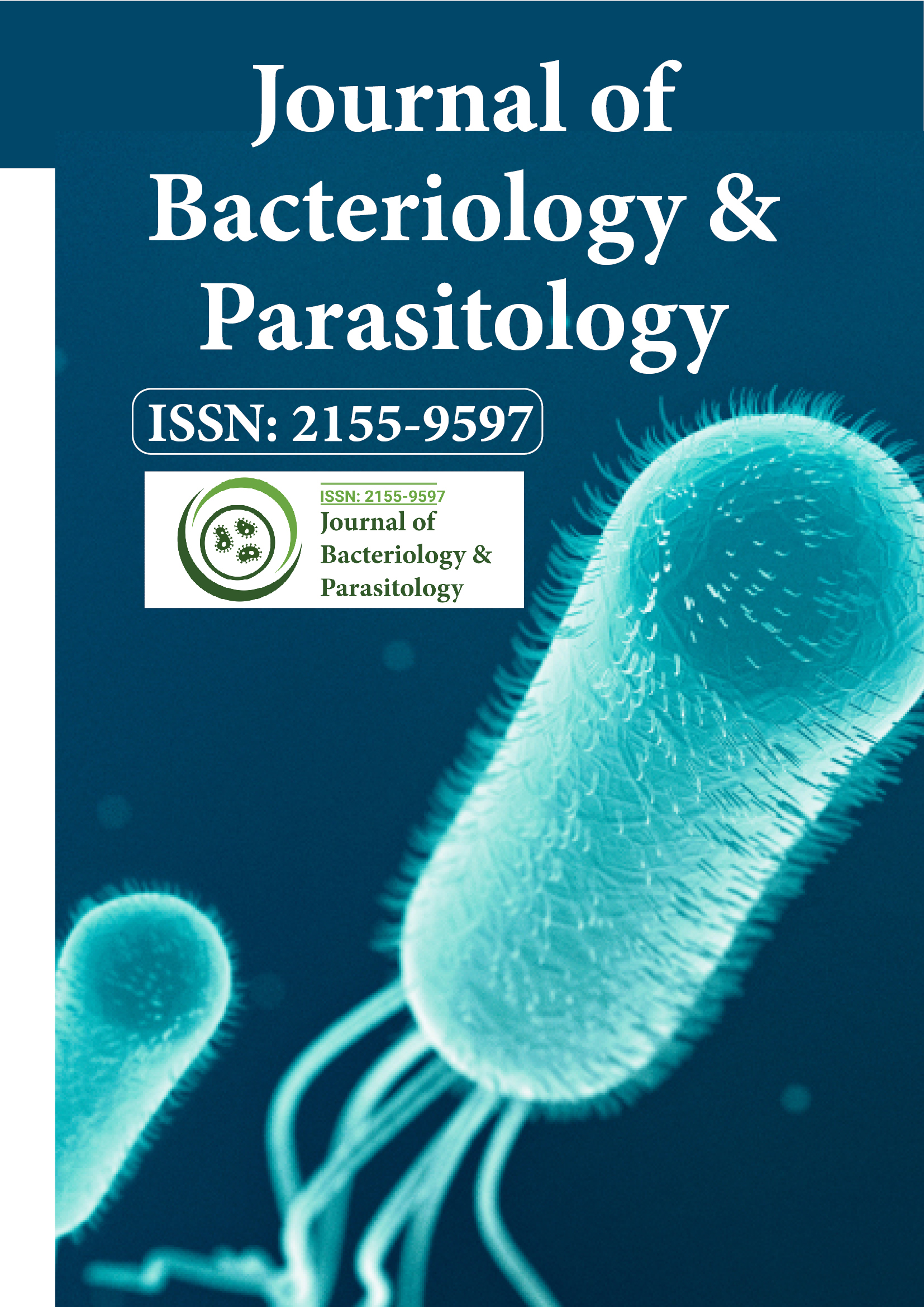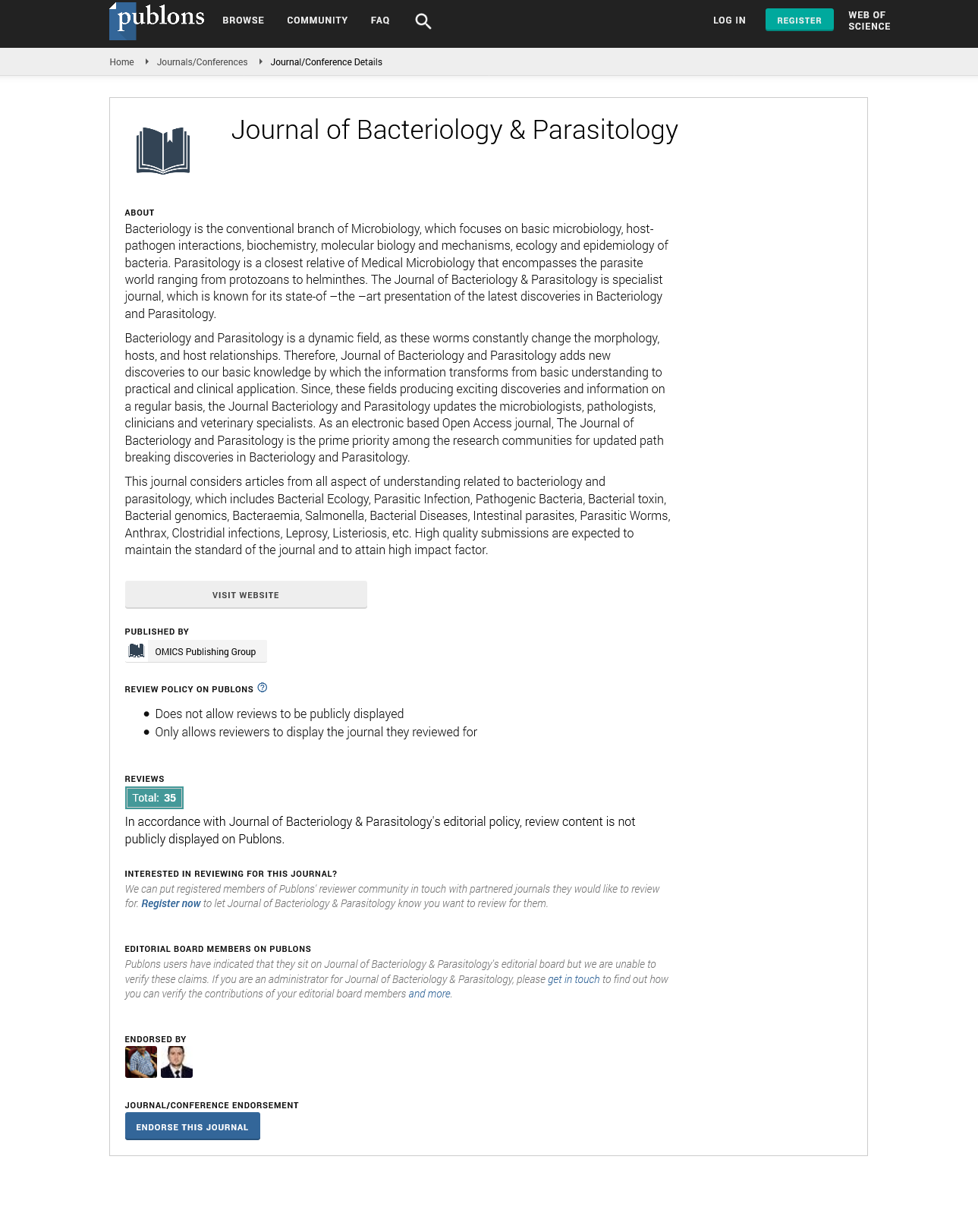Indexed In
- Open J Gate
- Genamics JournalSeek
- Academic Keys
- JournalTOCs
- ResearchBible
- Ulrich's Periodicals Directory
- Access to Global Online Research in Agriculture (AGORA)
- Electronic Journals Library
- RefSeek
- Hamdard University
- EBSCO A-Z
- OCLC- WorldCat
- SWB online catalog
- Virtual Library of Biology (vifabio)
- Publons
- MIAR
- Geneva Foundation for Medical Education and Research
- Euro Pub
- Google Scholar
Useful Links
Share This Page
Journal Flyer

Open Access Journals
- Agri and Aquaculture
- Biochemistry
- Bioinformatics & Systems Biology
- Business & Management
- Chemistry
- Clinical Sciences
- Engineering
- Food & Nutrition
- General Science
- Genetics & Molecular Biology
- Immunology & Microbiology
- Medical Sciences
- Neuroscience & Psychology
- Nursing & Health Care
- Pharmaceutical Sciences
Opinion Article - (2025) Volume 16, Issue 2
Parasitic Protozoa in Tropical Regions: Lifecycle, Transmission, and Control
Daniel Ortiz*Received: 24-Mar-2025, Manuscript No. JBP-25-29946; Editor assigned: 26-Mar-2025, Pre QC No. JBP-25-29946; Reviewed: 09-Apr-2025, QC No. JBP-25-29946; Revised: 16-Apr-2025, Manuscript No. JBP-25-29946; Published: 23-Apr-2025, DOI: 10.35248/2155-9597.25.16.540
Description
Parasitic protozoa cause a spectrum of illnesses in tropical climates, affecting millions yearly through mechanisms that involve complex lifecycles and transmission pathways. Species like Plasmodium, Leishmania and Trypanosoma require more than one host to complete their development; others such as Giardia or Entamoeba may transmit directly by ingestion of contaminated water or food. Plasmodium species, responsible for malaria, utilize Anopheline mosquitoes to move from human to vector and back. Within the human host, parasites enter liver cells, multiply there, then infect red blood cells, where further multiplication leads to fever cycles and possible complications such as cerebral infection or anemia. Leishmania are transmitted by sandfly bites, invading macrophages and provoking skin lesions or visceral illness. Trypanosoma brucei spreads via tsetse flies, causing sleeping sickness; Trypanosoma cruzi moves via reduviid bug feces, infecting heart or gastrointestinal tissue long term.
Routes of transmission depend on ecological conditions. Where standing water allows mosquito breeding, malaria risk increases. Sandflies and reduviid bugs prefer shaded, humid environments. Poor housing, lack of screens, crowding and outdoor sleeping increase exposure. Water bodies with poor sanitation support cysts of Giardia or Entamoeba, which then infect children or adults who consume untreated water. Food hygiene plays a role likewise; unwashed vegetables or fruits handled with unclean hands carry protozoal organisms.
Host factors matter greatly. Immunocompromised individuals may suffer more severe disease. Nutritional deficits may reduce resistance. Genetic factors such as sickleâ?cell trait reduce severity of Plasmodium falciparum infection but predispose in other ways. Coâ?infection by multiple protozoa or by bacteria may complicate clinical picture.
Diagnosis frequently depends on microscopic examination of blood smears or stool samples. In malaria, thick and thin smears visualize parasites in red blood cells; rapid diagnostic tests detect specific antigens. Culture or molecular tests help confirm Leishmania or Trypanosoma. Serological assays may detect antibodies in chronic or latent cases. Sensitivity and specificity vary with stage of infection and laboratory quality. False negatives occur in low parasite load; false positives in crossâ?reactivity or residual antibody.
Treatment depends on parasite species, geographical drug resistance, and patient state. Antimalarials include artemisinin combinations, chloroquine in regions where it still works, or other agents in resistant cases. Visceral leishmaniasis treated with amphotericin B or miltefosine; cutaneous forms with topical agents or systemic drugs. Treatment of trypanosomiasis varies by stage: early stage manageable with suramin or pentamidine; later crossing of bloodâ?brain barrier requires drugs such as melarsoprol or eflornithine. Protozoal diarrheal disease such as giardiasis responds to metronidazole or tinidazole. Physicians must weigh sideâ?effects, risk to pregnant patients, drug cost and availability. Resistance emerges when therapy fails, incomplete courses given, or counterfeit medications circulate.
Public health measures include insect control nets treated with insecticide, indoor residual spraying, elimination of vector breeding sites. Water purification, sanitation improvements and hygiene education reduce infections spread by cysts or oocysts. Surveillance of parasite distribution, drug efficacy and vector behavior assists in targeting interventions. Community involvement in prevention steps enhances compliance. Novel treatments are tested for toxicity, dosing and delivery methods. Environmental change, climate shifts and human migration alter parasite range, perhaps introducing organisms into regions previously free of particular protozoa. Thus, monitoring of vector habitat expansion is important.
Conclusion
Amplifying these efforts offers chance of lessening illness burden. Strong coordination among health authorities, researchers and affected communities is essential. Socioeconomic development, education, investment in infrastructure, and accessible medical care all contribute to lowering disease incidence. Research ongoing into parasite genome sequencing, immune evasion strategies, potential vaccine candidates and diagnostics that work in field settings without electricity. In some regions, trials of transmissionblocking vaccines aim to interrupt the vector cycle. Novel treatments are tested for toxicity, dosing and delivery methods. With consistent effort, many tropical protozoal infections may be brought under better control and reduced suffering.
Citation: Ortiz D (2025). Parasitic Protozoa in Tropical Regions: Lifecycle, Transmission, and Control. J Bacteriol Parasitol. 16:540.
Copyright: © 2025 Ortiz D. This is an open-access article distributed under the terms of the Creative Commons Attribution License, which permits unrestricted use, distribution and reproduction in any medium, provided the original author and source are credited.

